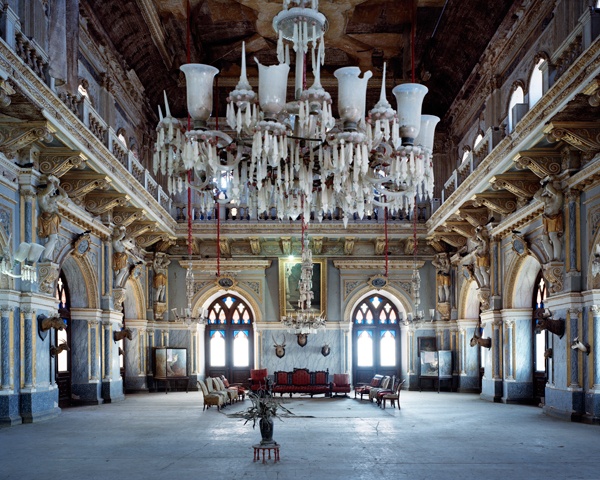RE: Renewal: Framing Transitions in the Indian Landscape at William Goodenough House

The best exhibitions capture and carry you through the space, flowing with you as you take in the work. Thought and care are given to the placement and context of each piece and the cumulative effect is greater than the sum of its parts; the exhibition itself becoming an extension of the art it brings together.
RE: Renewal, an exhibition that focuses on the effects of modern development on the environmental and cultural heritage of India, exhibits no such finesse. Upon entering the space, the spectator is immediately aware of having entered a didactic collection of work whose themes and connections have clearly received far more consideration from its curators than the experience of the audience. It’s the experience of having been abandoned in a room with art.
Having said that, we have to admit that the art itself is definitely worth a look. This is a well-curated collection of work with strong themes and an important and engaging inquiry. It’s the organisation of the exhibition that lacks structure, which is a shame because it means the viewer has to really work hard to figure out what’s going on, engaging in a bit of artistic archaeology to uncover layers of meaning. If you can get past the slapdash nature of its execution, RE: Renewal offers a fantastic entry point into an exciting dialogue about preservation and survival in a society still recovering from nearly two centuries of colonial rule and the chaos that followed in its wake.
Many parts of India are growing as quickly as the greatest cities of the West, perhaps even more so, yet this growth is neither uniform nor is it accomplished without consequences. RE: Renewal draws attention to this through the stark work of artists like Desmond Lazaro and Akshay Mahajan. Rachel Cunningham’s haunting images of a crumbling relic of the grandeur of old India highlight the transitory nature of all things, while simultaneously shining a light on the lingering guilt we may experience as deposed conquerors in the wake of Indian independence.
Cunningham was present at the opening of the exhibition to discuss her work and its context, along with Shubha Taparia, a new media artist whose work ranges from high-speed recordings of Photoshop manipulations to the preserved intimate-wear of deceased royalty. Both explained how their work was concerned with preservation (of a historical site, a personal effect or an environment) in the context of a society where preservation is not a core value. They stated: “It’s not a tradition in India, to preserve. They burn the dead.” Taparia indicated that her art is her way of preserving the past from the deprivations of unbridled commercial growth, while Cunningham’s images reveal the decay of the forgotten glories of years gone by.
RE: Renewal has been curated by newcomers to the field, Pujan Gandhi and Janice Pariat, a youthful pair whose enthusiasm and warmth radiate as they discuss the work, the subject matter and how they hope their exhibition will be received. “I hope it makes people linger,” Pariat said. “It’s good to linger.”
William Glenn
RE: Renewal is at William Goodenough House, Mecklenburgh Square, until 18th January 2013.

























Facebook
Twitter
Instagram
YouTube
RSS